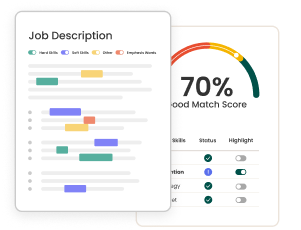Electronic Systems Technical Specialists #IN1142
Cummins - Columbus, OH
posted 3 days ago
About the position
Utilize industrial embedded controls engineering practices and principles to investigate product software problems, understand causal mechanisms, recommend appropriate action, own problem resolution, and document results. Work on the specification, design, implementation, testing and products in a variety of user applications. Apply and improve product software development processes including model-based development, coding, compiling and test, and tools including Simulink, integration tools, static analysis tools and compilers and hardware in the loop test tools. Use industry best practices including six sigma tools and industrial embedded controls engineering principles to verify software updates and ensure quality products. Obtain input and negotiate with product and software development teams and deliver verified software features, components, and builds to product teams. Make key engineering decisions in the areas of software requirements, architecture, design, implementation and test that impact the quality and performance of software subsystems and feature classes. Coordinate the development of design verification and system validation plans from a variety of inputs to identify failures while managing risk and relative priority. Evaluate analytical and experimental test results following engineering principles to verify that products meet internal technical requirements and to validate that design solutions meet user needs. Produce recommendations with technical documentation to guide product decisions. Utilize System Requirements Engineering methods and tools to translate stakeholder needs into verifiable requirements to which designs are developed. Establish acceptance criteria for the system of interest through complex analysis, allocation and negotiation. Track the status of requirements throughout the system lifecycle and assess the impact of changes to system requirements on project scope, schedule, and resources. Lead Product Platform Planning and Architecting to create and develop a holistic product platform including key architectural feature and function variants needed to align with market level product plans of future target markets. Generate alternative architectures traceable to the requirements and perform trade-off analysis in collaboration with life-cycle stakeholders to ensure a balanced and optimum platform. Mitigate potential product failure modes as part of Product Failure Mode Avoidance by identifying interfaces, functions, functional requirements, interactions, control and noise factors, and prioritized potential failure modes and potential failure causes for the system of interest to effectively and efficiently improve the reliability of company products.
Responsibilities
- Utilize industrial embedded controls engineering practices to investigate product software problems.
- Understand causal mechanisms and recommend appropriate action.
- Own problem resolution and document results.
- Work on specification, design, implementation, testing and products in various user applications.
- Apply and improve product software development processes including model-based development.
- Use tools including Simulink, integration tools, static analysis tools, and hardware in the loop test tools.
- Verify software updates and ensure quality products using six sigma tools.
- Negotiate with product and software development teams to deliver verified software features.
- Make key engineering decisions impacting software quality and performance.
- Coordinate development of design verification and system validation plans.
- Evaluate analytical and experimental test results to verify product compliance with technical requirements.
- Produce technical documentation to guide product decisions.
- Utilize System Requirements Engineering methods to translate stakeholder needs into verifiable requirements.
- Establish acceptance criteria through complex analysis and negotiation.
- Track status of requirements throughout the system lifecycle.
- Lead Product Platform Planning and Architecting.
- Generate alternative architectures and perform trade-off analysis.
- Mitigate potential product failure modes.
Requirements
- Master's degree in Industrial, Electrical, Computer or Mechanical Engineering, or related field and 3 years of experience as a Software, Systems, Electronics or Industrial Engineer, or related position.
- Alternatively, Bachelor's degree in Industrial, Electrical, Computer or Mechanical Engineering, or related field and 5 years of experience as a Software, Systems, Electronics or Industrial Engineer, or related position.
- Experience in design, implementation and testing.
- Experience with six sigma tools to ensure quality products.
- Experience in design verification and system validation.
- Experience in verifying products meet technical requirements and validating design solutions.
- Experience with System Requirements Engineering methods and tools.
- Experience in tracking requirements throughout the system lifecycle.
- Experience in Product Platform Planning and Architecting.
- Experience in performing trade-off analysis.
- Experience in Product Failure Mode Avoidance.
Benefits
- Relocation Package
